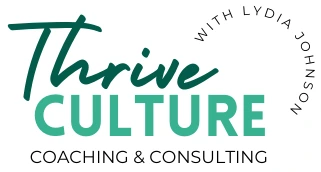Table of Contents
Have you ever sprinted to the bathroom between back-to-back Zoom calls—only to return breathless, headset half-on, praying you’re not on camera yet?
I have.
And I wasn’t working in some chaos-driven startup. I was a corporate HR consultant supporting C-Suite clients across multiple time zones. One time, I was late to a call with a client’s CEO because his direct report couldn’t seem to stop talking in the meeting I had right before.
My calendar? A hot mess of meetings.
My energy? Shot by noon.

If your calendar looks just as grim—a color-coded nightmare with no negative space—it’s easy to feel like this is just how work is now.
But years of experience, research, and supporting countless high-powered female leaders in my business have taught me that it doesn’t have to be this way. Being double-booked, brain-fried, and constantly “just five minutes behind” shouldn’t be anyone’s norm.
In this post, I’ll walk you through practical, research-backed ways to reclaim your time, reduce meeting stress, and finally get some real work done.
Before we begin, please remember: you’re not lazy, selfish, or bad at time management for feeling this way. You’re stuck in an often dysfunctional system that rewards constant availability and punishes pause. But together, we’ll work on helping you reclaim your time and capacity so you can avoid the burnout that comes from Zoom fatigue and too many meetings at work.
Why Back-to-Back Meetings Cause Burnout
The average professional spends nearly 10 hours a week in meetings—factoring in prep time. For leaders, it’s often more like 20 to 23 hours. That’s almost half the workweek, gone. And those are just the averages. I’ve definitely seen calendars (and had them myself) where the norm is 30+ hours.
When your calendar is stacked with meetings from morning to evening, there’s literally no space to think, plan, or make progress on meaningful work. That leads to constant context switching and a steady rise in stress levels.
Back-to-back meetings rob your brain of recovery time. Without breaks, you face decision fatigue, mental fog, and a sharp drop in your ability to focus. Your nervous system stays activated all day. You’re always reacting—never resting.
And it’s not just mental. Chronic Zooming leads to physical tension, digital fatigue, and poor follow-through. The stress doesn’t end when the meeting does—it lingers. You log off with a headache, racing thoughts, and a to-do list you haven’t touched.
It’s no wonder you’re feeling stressed and burnt out!
You’re not broken. Your calendar is, and it’s time to fix that.
Wait—won’t people think I’m lazy or disengaged?
It’s normal to worry that setting boundaries or opting out of constant meetings will make you look like you don’t care. But here’s the truth: protecting your time often sends the opposite signal.
People tend to assume that busy calendars = important people. So when you defend your time, it can actually reinforce your authority, not diminish it.
More importantly, when you reclaim your calendar, you get more of the right things done. That makes you more effective, more present, and yes… more successful.
And don’t forget: many of these shifts aren’t just good for you. They help everyone. By setting better norms—shorter meetings, async updates, real breaks—you create a more sustainable workplace for others, too.
Think about it: If it’s not working for you, it’s probably not working for someone else either. And if you shift the norm, chances are others will follow.
10 Solutions for Too Many Meetings—Backed by Research and Experience
If you’re stuck in too many meetings and have no time to work, these 10 solutions will help you reclaim your calendar—and your focus.
1. Schedule “Focus Time” like your job depends on it—because it does
When your entire day is filled with meetings, the actual work gets squeezed into the cracks—and so does your sanity. That’s why high-performing leaders need to stop treating focus time like an afterthought—and prioritize it with the same urgency they give high-stakes meetings and deadlines.
Set aside two-hour blocks on your calendar at least a few times a week. Label them clearly (“Strategy Work,” “Deep Focus,” or even “Do Not Book”) and mark them as busy. Better yet, make them recurring.
Want to level up? Block this time during your natural peak productivity hours. For many people, that’s mid-morning or just after lunch. And yes, these blocks should include time to think—not just do.
If your workplace has a culture of constant availability, remember: You can still be a team player without being a martyr to your calendar. Prioritizing focus time isn’t selfish. It’s how leaders stay effective.
2. Use “Out of Office” blocks to auto-decline meetings (and protect your boundaries)
Your calendar can be your biggest enemy—or your strongest ally. One of the simplest ways to defend your time? Use recurring “Out of Office” blocks.
Unlike a regular “busy” status, setting something as “OOO” on your calendar tells tools like Google or Outlook to automatically reject meeting invites during that time. That means you don’t have to justify, negotiate, or explain. It just says “unavailable.”
This is especially powerful for:
- Preventing early morning or after-hours meetings from creeping into your day.
- Protecting your focus blocks, school pickups, or even lunch breaks from being overridden.
- Creating regular “No Meeting” hours—or full days—every week.
It’s a quiet way to say no without the guilt or the back-and-forth. And when you start honoring your calendar, others will, too.
3. Batch meetings by theme or day to reduce mental load

When you’re constantly switching between different types of meetings, you spend more time recalibrating than actually contributing. You never really get into your groove because your brain barely gets a chance to fully engage before it’s forced to shift gears again.
That’s why you need to start batching similar meetings together.
Instead of scattering your 1:1s, team check-ins, and project syncs across the week, group them by type and stack them on specific days. For example:
- All direct report 1:1s on Tuesdays
- Leadership team meetings on Wednesdays
- External-facing or client calls on Thursdays
This reduces the mental load of context switching and helps your brain stay in the right mode longer. It’s especially helpful for leaders who are balancing strategic thinking with team management and external relationships.
Even if your week is still full, batching creates rhythm and predictability. It makes your work feel more intentional—and a little less chaotic.
4. Default to shorter meetings
Most meetings stretch to fill the time they’re given. So when the default is 60 minutes, guess what? People meander, pile on unnecessary updates, and magically “run out of time” for what matters most.
But here’s the truth: almost every meeting could be shorter. When you start defaulting to 25- or 45-minute blocks instead, two things happen:
- People get to the point faster.
- Everyone gets breathing room between calls.
Shorter meetings encourage better preparation, tighter agendas, and protect your brain from the compounding effects of nonstop video calls. Plus, it gives everyone the gift of time back.
If you lead meetings, set the tone by stating upfront: “I’d love to wrap five minutes early so everyone has a breather.” That simple cue shifts the energy and sets a new (healthier) norm.
Bonus tip: Change your calendar settings to make 25 and 50 minutes the default. Let the tool do the boundary work for you.
5. Ask for an agenda before you accept invites
You don’t need to attend every meeting you’re invited to (really). One of the easiest ways to cut down on unnecessary calls? Ask what the meeting is for before you say yes.
Here’s how you can approach getting the clarity you need before hitting yes:
- “Can you send over the agenda?”
- “What decisions are we making on this call?
- “Is there anything you need from me specifically in this call?”
These questions are respectful and strategic. They gently signal that your time is valuable—and help others clarify whether your presence is essential or just habitual.
Over time, this practice also trains your team and colleagues to think more critically before hitting “Add Guest.” That’s a win for everyone.
6. Create a habit of declining meetings
You are allowed to say no.
This may sound obvious, but for high-achieving leaders—especially women who’ve been conditioned to be team players at all costs—it’s not always easy to act on. (Sound familiar? Check out this guide for how to heal Human Giver Syndrome!)
If your default is to accept every invite out of guilt, obligation, or habit, it’s time to shift the baseline. On Mondays, create a habit (maybe even a meeting with yourself, ha!) to scan your week ahead and look for meetings to opt out of.
Ask yourself:
- Do I actually need to be in this meeting?
- Is this the best use of my time, or can someone else attend?
- Will I be adding value—or just showing up because I always do?
Declining isn’t rude. It’s a strategic leadership move. And when done thoughtfully, it frees up not just your calendar—but your mental load, your focus, and your energy.
Need a script? Try:
- “I’m prioritizing focus time this week—can you loop me in with notes or decisions after?”
- “I’ll be sending Sally in my place for this meeting. She’s up to speed with my perspective and will loop back with me afterwards with a recap.”
Saying no to more meetings creates space for deeper thinking, better work, and real leadership.
7. Switch to asynchronous tools like Loom, voice memos, or Slack updates
We all know the joke, “This could’ve been an email.”
But in today’s world, we have so many more options that are easier (and more effective) than drafting a mini novel of an email—and hoping people actually read it.
So instead of defaulting to yet another sync, try one of these async alternatives:
- Use Loom to walk through a deck or project update. Bonus: people can rewatch it if needed.
- Send a voice memo instead of booking another call.
- Share asynchronous updates in Slack at the start or end of the day.
This approach honors different attention spans, energy patterns, and neurodivergent work styles. It supports better work-life boundaries and helps your team stay focused—without the pressure of being “always on.”
Plus, these strategies create leave-behinds that others can revisit later, making it a great tool for onboarding, cross-training, or catching people up without repeating yourself.
8. Redesign your setup: Walking pads, sit/stand desks, and walking calls
Your body wasn’t built for back-to-back video calls in a chair all day. And yet, that’s how most of us are working—frozen in place, staring into a screen, barely moving for hours.
Time to change that.
If you’re on video all day, try using a sit/stand desk and rotating between positions. Experts recommend a 3:1 ratio—about 45 minutes sitting, 15 standing. It helps with circulation, energy, and focus.
Want to take it further? Try a walking pad. It’s easier than you think to slowly walk while taking notes, prepping a deck, or even typing—especially if you’re a fellow ADHD woman, neurodivergent, or just need more physical movement to stay regulated and focused. I use mine during deep work and love it.
For more informal or internal meetings, opt for walking calls instead of video. Drop the camera, grab your headphones, and walk while you talk—or schedule an in-person walk-and-talk if you’re local.
Movement isn’t a bonus. It’s how your brain and body were designed to work best. After all, you have a body– you’re not just a floating head!
It’s time you made your meetings work better for your body.
9. Designate a no-video day (or at least, no-video meetings)
Being on camera all day is exhausting—emotionally, mentally, and physically. It’s called “Zoom fatigue” for a reason. That constant self-awareness, screen-staring, and performative nodding drains your energy faster than you think.
That’s why building in video-free time is essential.
Start small by encouraging your team to opt for audio-only meetings when video isn’t necessary—especially for big company all-hands calls, recurring check-ins, or internal calls.
Then, go a step further and declare a no-video day once a week. You’ll be amazed at how much mental space it frees up.
This isn’t about disengaging. It’s about conserving energy for what actually matters. And for your team, it sends a powerful signal: it’s okay to prioritize focus and comfort over appearances.
10. Host open office hours instead of constant 1:1s
If your calendar is packed with 1:1s that all sound the same—“quick questions,” project updates, recurring check-ins—it’s time to rethink your approach.
Instead of scheduling a dozen similar conversations every week, try hosting open office hours. Block a recurring time on your calendar when team members can drop in if they need support, feedback, or clarification. No back-and-forth scheduling. No reserving an hour for a 10-minute question.
You can make these in-person, virtual, or hybrid, depending on your role. For remote teams, try setting up a dedicated Slack window each week where you’re actively online to answer questions, respond to voice memos, or provide quick input.
Even better? Use an AI note-taker tool (like Otter, Sembly, or Fireflies) to capture key takeaways, decisions, and themes from each session. Summarize what came up in a shared doc, Slack thread, or even a Loom recap. Over time, you’ll create a searchable knowledge base your team can self-serve from, cutting down on repeat conversations and freeing up everyone’s calendar.
This is leadership that scales. You stay accessible without being overwhelmed, and your team learns to solve problems more independently over time.
Conclusion: Your calendar doesn’t need to be your enemy
If you’ve been feeling like your whole day disappears into a blur of meetings—and your real work (not to mention your sanity) is buried underneath it—you’re not alone. This isn’t a time management issue. It’s a systems issue. And systems can be reworked.

The truth is, you don’t need another productivity hack. You need permission to reclaim your time—and the tools to do it sustainably. Whether it’s using walking pads, async tools, no-video days, or boundary-protecting calendar blocks, you have more options than you think.
And if you’re a woman in leadership juggling a demanding role, caregiving responsibilities, and a calendar that never stops—this isn’t just a nice-to-have. It’s essential. You cannot lead well if you’re burning out just trying to survive the week.
That’s where I come in. Through my flagship coaching program, She Leads Well, I help high-performing women like you restructure their time, lead with clarity, and recover from chronic overwork—without sacrificing ambition or impact.
Ready to stop sprinting through your days and start owning your calendar again?
Book a consultation here.




Share